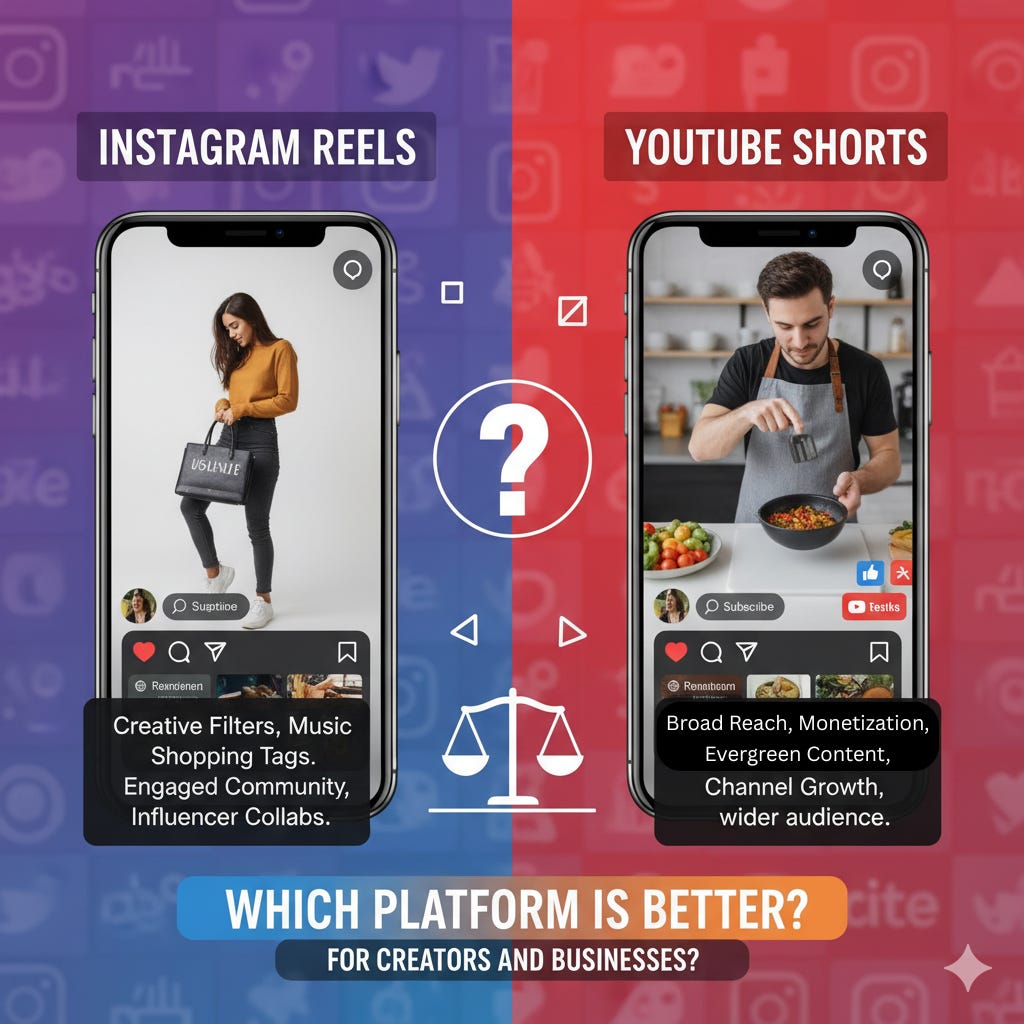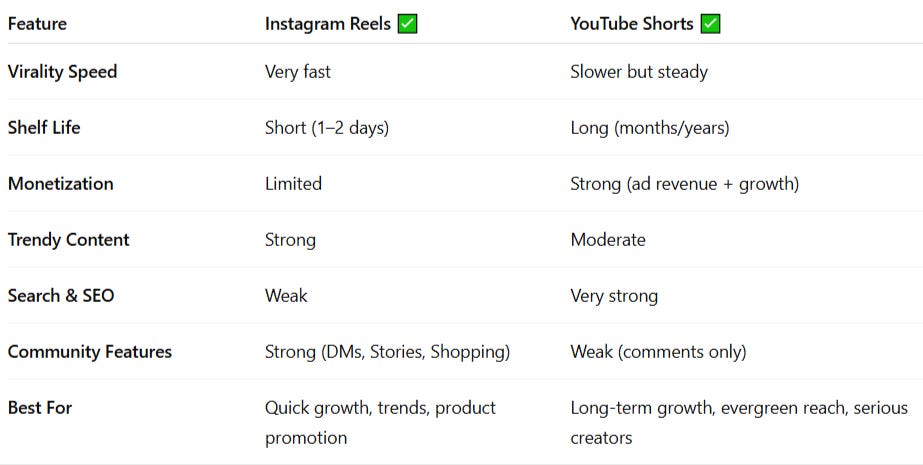Instagram Reels vs YouTube Shorts: Which Platform Is Better for Creators and Businesses?
Reels vs Shorts: Find the best platform to grow your audience and brand in 2025.
Short-form content is more than a passing trend — it’s reshaping how we use social media. Whether it’s quick tutorials, memes, behind-the-scenes clips, or brand promotions, short videos grab attention faster than any other format. In 2025, two platforms are leading this short-form race: Instagram Reels and YouTube Shorts.
But which one is better for creators, brands, and businesses? Let’s break it down with a neutral comparison (pros & cons) and then wrap up with a recommendation-style conclusion.
Instagram Reels: Pros & Cons
Pros of Instagram Reels
Massive Social Integration – Reels are part of Instagram, which means they benefit from existing features like Stories, DMs, and shopping tools.
High Engagement – Instagram’s algorithm promotes Reels aggressively, making it easier for content to go viral and reach new audiences.
Trendy Content Culture – Music, memes, filters, and trending challenges often start on Reels, making it perfect for creators who thrive on trends.
Direct Messaging Power – Unlike YouTube Shorts, Reels can be shared instantly in DMs, boosting organic reach.
E-Commerce Integration – Instagram Shopping is directly linked to Reels, making it ideal for businesses selling products.
Cons of Instagram Reels
Shorter Shelf Life – Reels often peak within the first 48 hours and then fade out.
Limited Monetization Options – Instagram has experimented with bonuses and ads, but revenue opportunities are fewer compared to YouTube.
Competitive Environment – With so many creators, standing out on Reels can be tough.
Algorithm Changes – Instagram frequently updates its algorithm, making reach unpredictable.
YouTube Shorts: Pros & Cons
Pros of YouTube Shorts
Stronger Monetization – Shorts have ad revenue sharing, making YouTube more rewarding for long-term creators.
Extended Shelf Life – Unlike Reels, Shorts can keep generating views for months (sometimes years).
Evergreen Visibility: YouTube’s huge search audience makes Shorts discoverable and evergreen.
Seamless Transition to Long-Form – Creators can grow through Shorts and then direct viewers to their long-form YouTube videos.
Cross-Device Reach – YouTube works across TVs, desktops, and mobile devices, giving Shorts a wider exposure.
Cons of YouTube Shorts
Lower Engagement in Community Style – Shorts don’t have the same quick interaction features as DMs or stories.
Slower Virality – Shorts usually take more time to pick up compared to Instagram Reels.
Less Trend-Driven – Shorts aren’t always as trendy or meme-heavy as Reels, which can feel less “fun” for creators who rely on trends.
High Competition with Long-Form Creators – Your Shorts may compete with established YouTube creators, making it harder for beginners.
Recommendation: Which Platform Wins in 2025?
If your goal is fast growth, brand visibility, or product promotion, then Instagram Reels is better. It’s trend-driven, highly engaging, and integrates well with shopping features.
If your goal is long-term growth, revenue generation, and building authority as a creator, then YouTube Shorts is the winner. It offers stronger monetization, SEO benefits, and lasting reach.
Each platform delivers results, but which one to choose depends on what you want.
For businesses and influencers selling products or riding trends → Go with Instagram Reels.
For content creators and educators who want sustainable growth and income → Go with YouTube Shorts.
Final Tip: The smartest creators in 2025 use both platforms. Create content once and repurpose it for Reels and Shorts — maximizing reach, engagement, and growth without doubling the effort.



